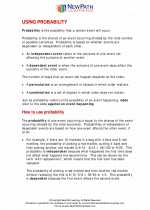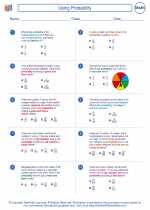Stratified Sampling
Stratified sampling is a sampling method used in statistics to divide the population into subgroups, or strata, and then take a random sample from each stratum. This method ensures that each stratum is represented in the sample, and allows for more accurate analysis of the population as a whole.
Why Use Stratified Sampling?
Stratified sampling is used when the population can be divided into distinct subgroups that may have different characteristics. By ensuring that each stratum is represented in the sample, the results are more likely to accurately reflect the entire population. This method is particularly useful when there is variability within the population, and helps to reduce sampling error.
Steps for Conducting Stratified Sampling
- Identify Strata: Divide the population into distinct subgroups based on relevant characteristics.
- Determine Sample Size: Decide how many individuals to sample from each stratum, based on its proportion in the population.
- Random Sampling: Use a random sampling method to select individuals from each stratum.
- Combine Samples: Combine the samples from each stratum to form the complete sample for analysis.
Advantages of Stratified Sampling
- Increased Accuracy: Ensures that each subgroup is represented, leading to more accurate results.
- Reduced Sampling Error: Helps to minimize the impact of variability within the population.
- Allows for Comparison: Enables comparisons to be made between different subgroups within the population.
Example
Suppose you want to conduct a survey on the popularity of different ice cream flavors in a city. You divide the city into distinct neighborhoods (strata) based on demographics, and then take a random sample of individuals from each neighborhood. This allows you to accurately represent the preferences of the entire city population.
Study Guide
When studying stratified sampling, it's important to understand the following key points:
- The purpose and benefits of using stratified sampling.
- The steps involved in conducting stratified sampling.
- How to identify relevant strata within a given population.
- The advantages of using this method compared to other sampling techniques.
Practice creating strata and determining sample sizes for different populations to solidify your understanding of this sampling method.
By mastering the concept of stratified sampling, you'll be better equipped to analyze and draw accurate conclusions from data collected through this method.
.◂Math Worksheets and Study Guides Seventh Grade. Using Probability

 Worksheet/Answer key
Worksheet/Answer key
 Worksheet/Answer key
Worksheet/Answer key
 Worksheet/Answer key
Worksheet/Answer key
